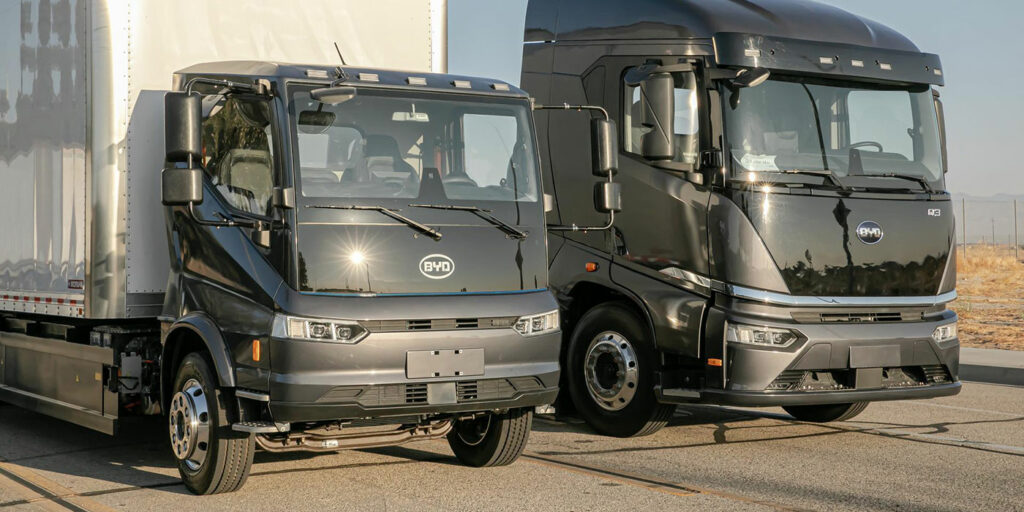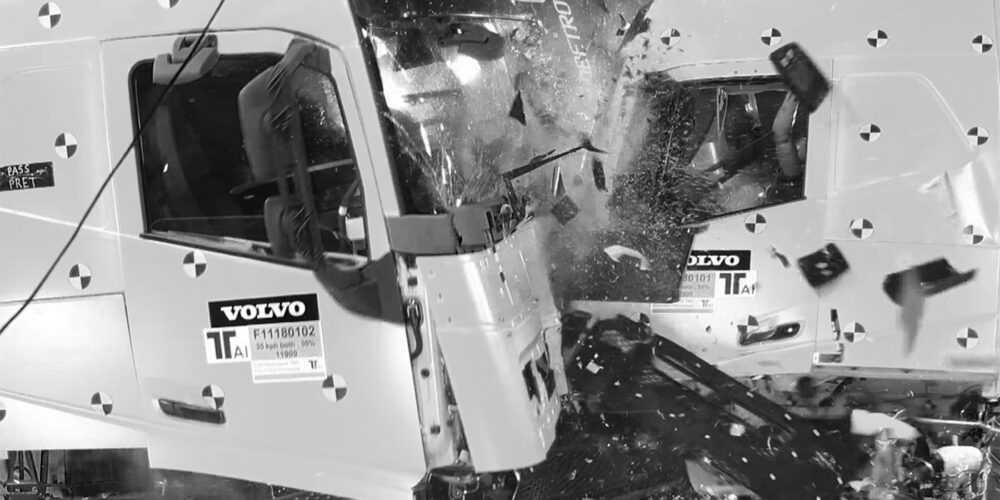You used to be able to say, “It’s not every day there’s a new truck OEM.” Thanks to the rapid advancements of EV technology, it now definitely feels like there are new OEMs every day. But it takes more than clever marketing to capture fleet attention. You have to prove your potential. BYD did that in spades with its involvement in Run on Less Electric.
The Anheuser-Busch BYD Class 8 touted a range of 150 to 200 miles and a 435 kWh battery packed in a cabover body configuration. Across 18 days the truck ran 304 miles and made an estimated 47 deliveries.
“We are learning what the demands of the U.S. market are,” said George Miller, director of sales, national fleets, electric trucks, BYD Motors. “We’re now on our third generation of EV trucks. Through the first and second generations we learned what are the key requirements–how do we make those electric trucks efficient, and keep drivers happy and comfortable. The Gen 3 trucks have been getting great feedback.”
Some quick background on BYD. The company started in China in 1995 as a rechargeable battery manufacturer, diversified into different technology segments. It made its debut into the U.S. truck market in 2016 when the first generation electric trucks were launched. Most recently, the aforementioned third generation trucks were unveiled at ACT Expo last year.
Miller took some time to talk more about what BYD has learned over the years, the equipment solutions and support network its building and how it plans to eat up market share as electric trucks gain ground.
Fleet Equipment (FE): Outside of BYD entering a new market, what challenges do you see in terms of general electric truck adoption and where’s the market heading from your view?
Miller: You always have the challenge of range, payload, and cost. We try to focus on duty cycles that are able to work with the range that we offer, and there are plenty out there. I think when companies go out and try to pitch a giant range. they all speak to their potential range, which is able to draw more eyes. It draws less positive attention when it doesn’t actually make that range based on a heavy payload, or poor driver behavior, or additional challenges they may face such as hills.
We tend to talk about a ‘working range.’ We are conservative with our customers. I think that makes them happy when they get their truck out on the road, and we told them this is a 130-mile range truck, and then they see that they can actually get 170 miles.
When it comes to payload, that’s a hard number. Until we have regulation changes on how heavy Class 8 trucks can be … Our trucks can take more weight, but bridge laws restrict vehicles to 82,000 pounds. An electric truck is going to be 4,000 to 6,000 pounds heavier than a diesel; that just comes straight out of payload. We’re working with customers that are ready to have that payload cut, and companies that cube out. We’re finding the right place where we fit in the market. As the technology evolves, we continue to improve our batteries and trucks to get more range and lighter weight.
FE: Right, you’re a battery manufacturer as well. What advantages does that bring?
Miller: We can continue to bring costs down, especially as we get better and better at building trucks. We are certainly seeing improvements in our pricing as we go and we’re very strategic about how we’re pursuing incentives and looking toward bidirectional charging activities to add another revenue stream to electric vehicles.
In the next several months, we should be ready to initiate vehicle-to-grid activities on our trucks, which can increase revenue streams. That changes the economics. As soon as you can operate as a battery and a truck, you dual use and you don’t need to be exactly at parity with a diesel truck. Fleets then start to realize that electric trucks do more.
Then, providing good financing options is another key component. We’re exploring a lot of transport-as-a-service type of partnerships to bring scale to the capital and charging infrastructure needs.
FE: What support do you offer in terms of infrastructure?
Miller: We work with charging partners to integrate our vehicles with chargers. We work with ChargePoint, ABB, BTC, Heliox, Siemens, Rhombus–a wide range of charger manufacturers.
FE: Getting the trucks into the market is one thing, what’s your plan for supporting them after the sale?
Miller: We have a nationwide BYD service network that we’re building. Our primary facility is in Lancaster, Calif., just north of LA. From there, we have a 100,00-square-foot parts facility in California. We do have a lot of trucks in California, so we built a service center in San Carlos (the Bay area). We just opened a service center in Los Angeles. We also have service centers in Indianapolis, Lodi, New Jersey, Hawaii, and Washington.
We also have technicians and engineers that can service trucks across California. Our mobile technicians are strategically based around where they have flatbeds and trucks outfitted with parts and service equipment. They’re able to diagnose and solve 95-plus percent of the issues on site.
FE: The low today in Ohio was 17 degrees, so I think we need to visit the Hawaii location, just to confirm the details.
Miller: Totally reasonable.
FE: Reduced maintenance compared to diesel trucks has been a theoretical talking point, but how have you seen the maintenance needs playing out so far?
Miller: In terms of preventative maintenance needs, it’s very limited. I’d say less than 80% of what you would see compared to preventative maintenance on a diesel. With our trucks, you’re looking at your fluids, cooling power, steering and washer fluid, and you’re changing out the gear axle oil every six to 12 months. You also have your standard grease points, but you don’t have any DEF fluid. You don’t have a bulk of the filters. There’s a lot that comes out when you switch to electric, so you see a huge amount of savings on that front.














